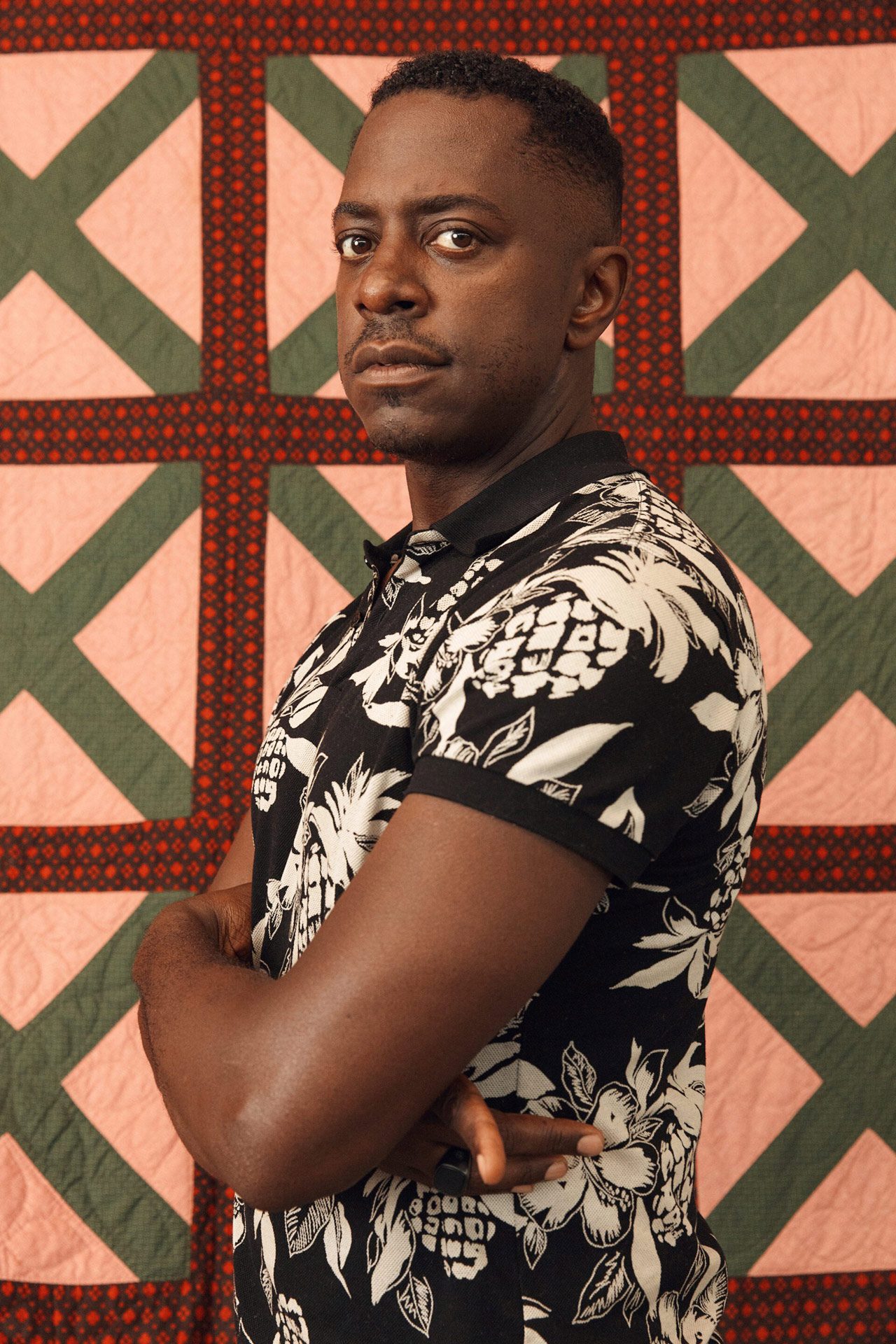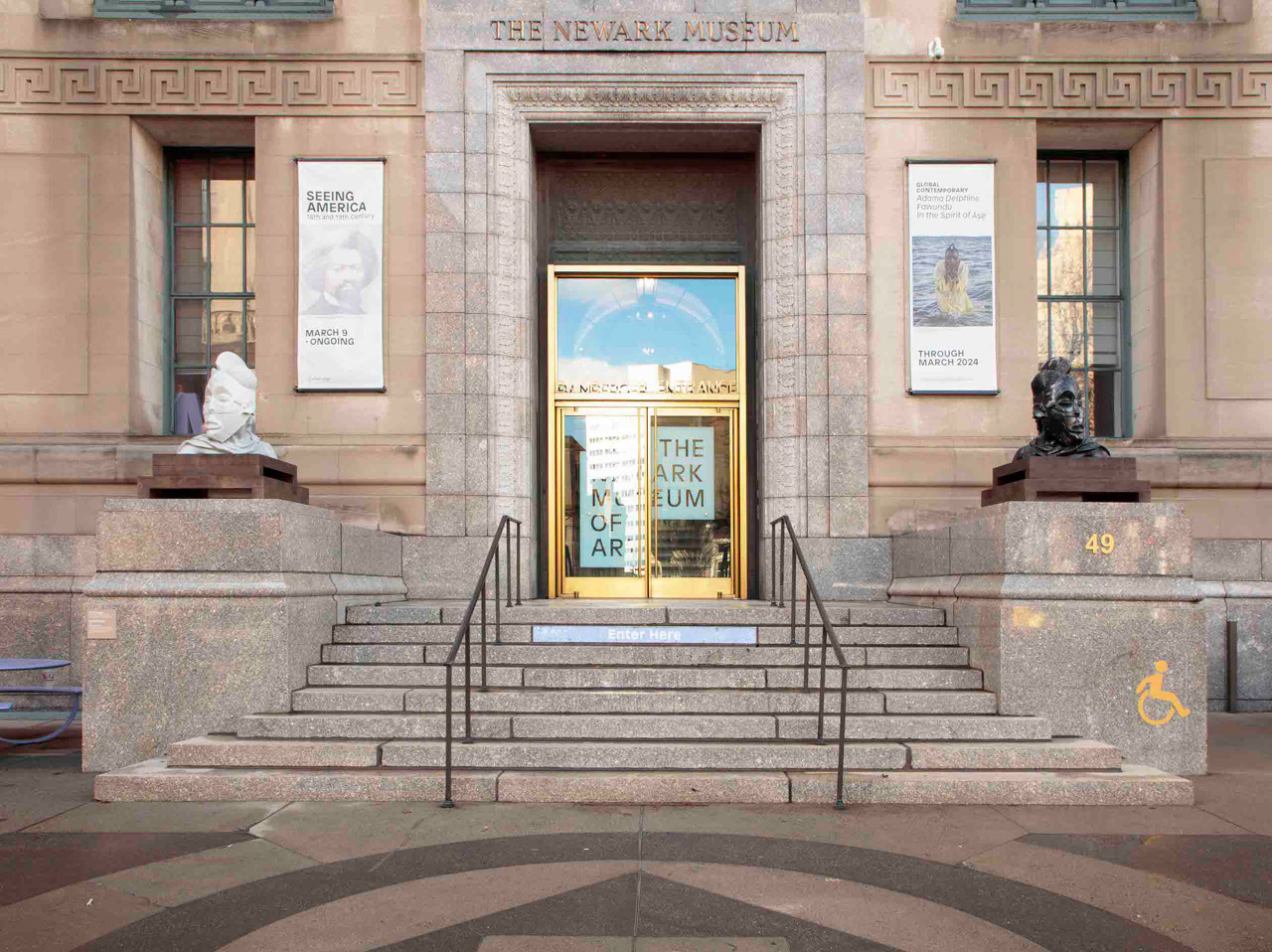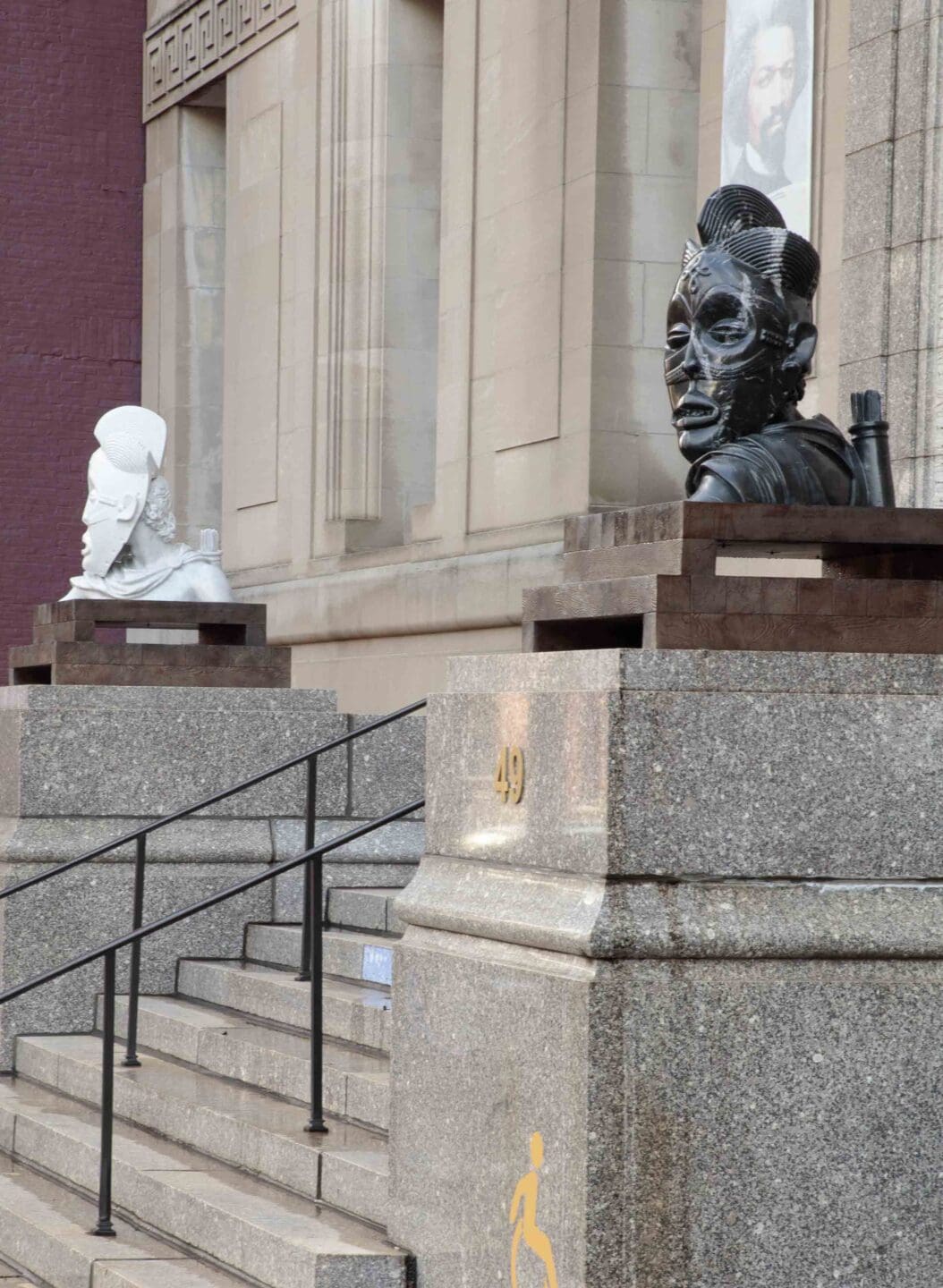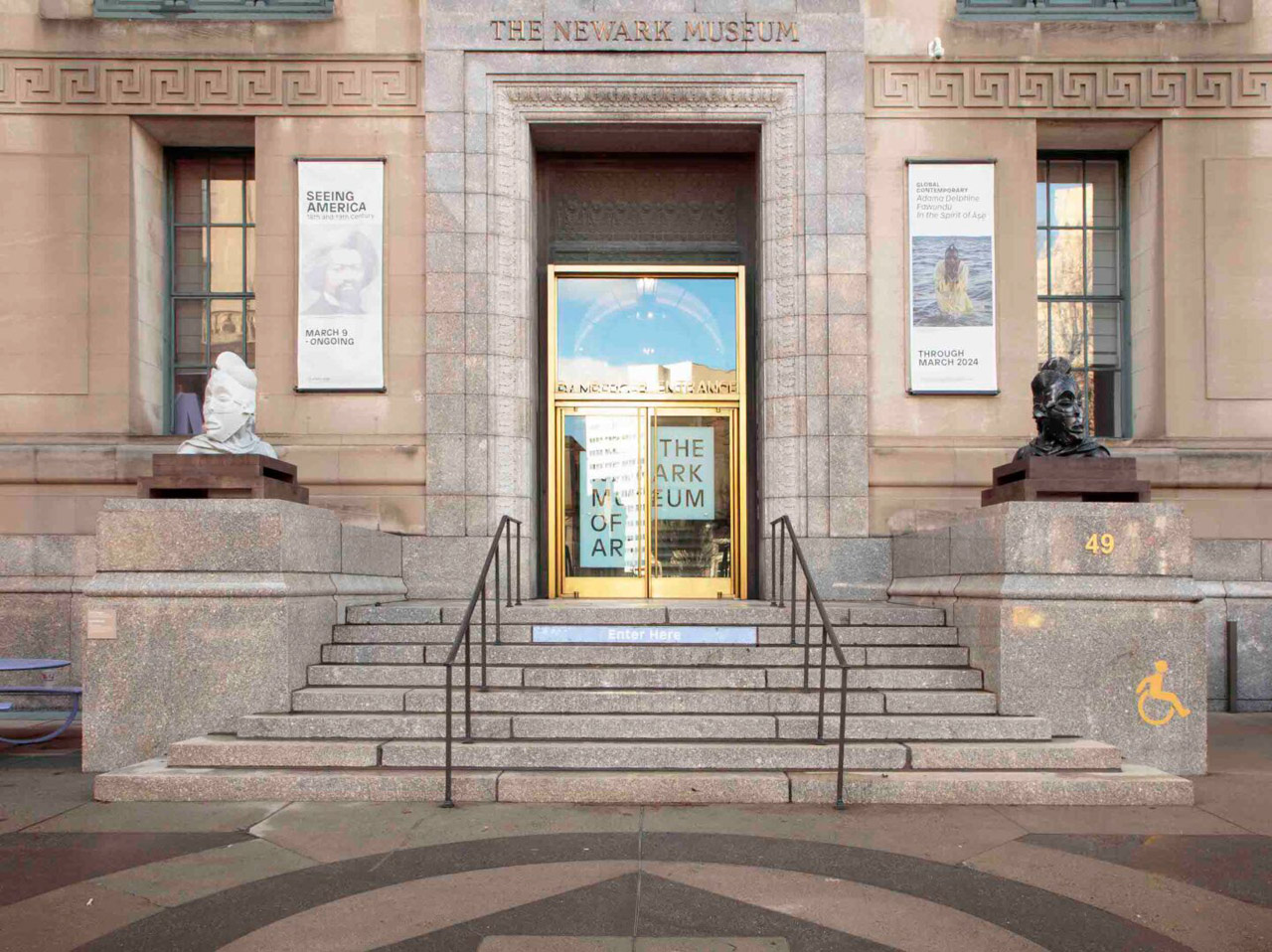Sanford Biggers, Apollo (Diptych) is a transformative outdoor art installation that speaks to the Museum’s global collections and its mission—to welcome everyone and spark curiosity.
Part of Biggers’ Chimeras series, this pair of larger-than-life sculptures carved from black and white marble combine classical Greek and African heroic imagery. Acquired by the Museum in 2023, Apollo (Diptych) is on long-term display at the Museum’s main entrance at 49 Washington Street.
Apollo is a mythological deity that represents the arts, healing, prophecy and truth. These two guardian statues are comprised of elements of various European and African sculptures that signify these attributes and bestow them on all who walk past them.Sanford Biggers
About the Artist

Sanford Biggers’ work is an interplay of narrative, perspective, and history that speaks to current social, political, and economic happenings, while also examining the contexts that bore them. His diverse practice positions him as a collaborator with the past through explorations of often overlooked cultural and political narratives from American history.
Born in Los Angeles, Biggers received a BA from Morehouse College, Atlanta, and an MFA from The School of the Art Institute of Chicago, where he sits on the Board of Governors. He currently lives and works in New York, NY. His work is included in numerous public collections and he has received numerous awards and accolades, including the Bronx Museum’s Art and Social Justice Award (2024), Smithsonian Artist Research Fellowship (2024); the 26th Heinz Award for the Arts (2021), and a Guggenheim Fellowship (2020).




